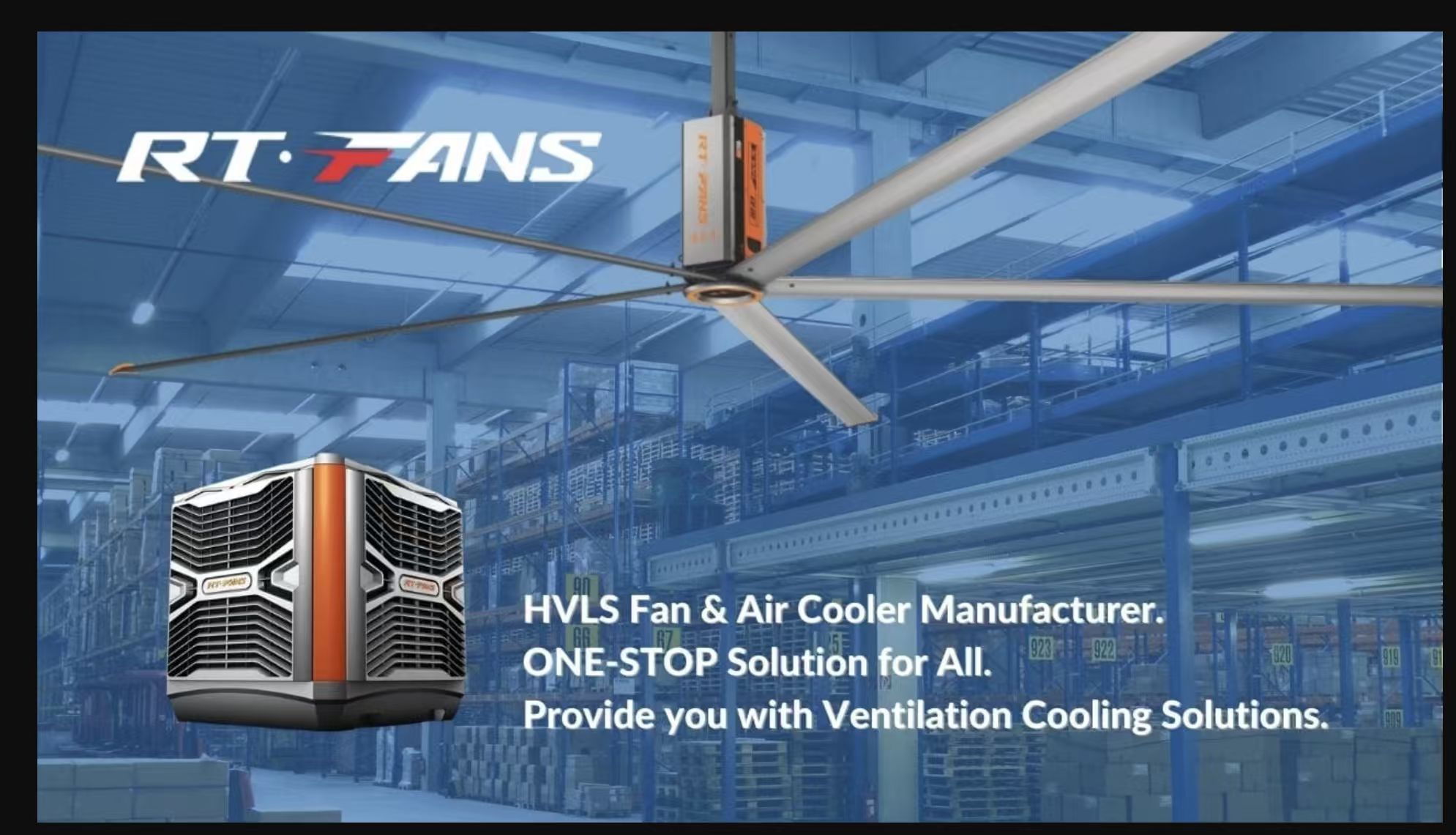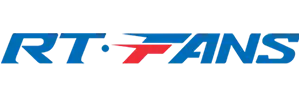Black Friday, Cyber Monday, Christmas, Singles Day and the holiday season turn e-commerce distribution centers (DCs) into hot spots, where the volume of orders increases 50-200 percent and employees operate under strict timeframes to fulfill deadlines. These mountains increase heat, humidity, and air quality issues, posing a threat to productivity and safety. High-Volume Low-Speed (HVLS) ceiling fans are essential in e-commerce distribution centers to ensure comfort, lessen heat stress, and facilitate effective operations with extreme workloads. These fans reduce perceived temperatures by 5-10F, covering 15,000-20,000 square feet per fan and saving up to 20-30 percent on HVAC to ensure the seamless functioning of holiday rushes. Peak season logistics cooling, holiday surge fans DC, and HVLS fans ecommerce distribution is a strategic requiring of e-commerce logistics managers, operations directors, and facility planners. RTFANS is a company with more than 20 years of experience in ventilation solutions; it has optimized DCs all over the world. We will discuss the challenges of the holiday surge, operational risks, the benefit of ceiling fans, how they resolve these issues, their cost-effectiveness, a case study, and frequently asked questions.
The Holiday Surge Challenge in Distribution Centers
During peak seasons, e-commerce DCs are under high stress and may strain the facilities.

Massive Order Spikes
Black Friday and Singles, two of the most popular holidays in the United States, can help grow the amount of orders by 50-200 percent, and e-commerce sales around the globe are expected to reach 7.4 trillion by 2025. DCs handle thousands of packages each day, and high-throughput capacity centers deal with 2-3 times the usual capacity. This increases heating and air quality requirements in spaces that can be upwards of 100,000 square feet.
Increased Workforce Density
Peak seasons increase worker density by a factor of 2-3 times (1-2 per 1,000 square feet), contributing body heat (100-150 W/per person) and increasing temperatures by 5-10 F. Packing and picking areas are crowded, and according to OSHA rules, heat stress is increased when temperatures exceed 80-degree Fahrenheit (27-degree Celsius: moderate work).
Extended Operating Hours and High Equipment Use

During holiday times DCs are 24/7 and conveyors, robotics and forklifts produce 5-10 kW of heat per system. Multiple shipment door openings enable the influx of humid air, necessitating strong ventilation of the distribution center during peak season to maintain a stable situation.
Operational Risks During Peak Season
Demand peaks increase risks that impair efficiency and safety.
Heat Stress and Fatigue Among Workers
Heat stress occurs at temperatures over 85 F (29 C) decreasing productivity by 2 per cent per degree and doubling the number of fatigue-related errors, according to OSHA research. Exhaustion causes low picking speed and increased accident rates, which is important in tight holiday schedules.

Lower Accuracy in Picking/Packing
Heat makes it harder to perform tasks efficiently, and errors in shipment due to this leading to the inaccuracy of performance by 10-15% on manual work cost up to 50-200 dollars per case. This slows down orders at the time of peak demand to the detriment of customers.
Slower Throughput and Increased Safety Incidents
During surges, heat stress reduces throughput by 10-20% and an increase of absenteeism of 10% is observed. According to OSHA, forklift and pedestrian accidents in hot environments have increased by 20 percent, which can cost the company between $5,000 and 20,000 per accident in medical expenses and downtime.
How Ceiling Fans Solve Peak Season Problems

Offering customized cooling solutions to holiday logistics, HVLS ceiling fans are available with 8-24 foot diameters, and at low speeds, move up to 400,000 cubic feet per minute.
Large-Scale Airflow Stabilizes Indoor Temperature
One HVLS fan cools 15,000-20,000 square feet of air, and destratifies it to lessen temperature differences by 5-10 degrees Fahrenheit. This balances the situation in busy areas, which facilitates airflow management e-commerce areas.
Reduce Perceived Temperature by 5-10°F
Space cooling by the wind-chill effect of 5-10F will enhance the evaporation of sweat but not drafts. This can reduce heat stress, which is compatible with the ASHRAE Standard 55 of thermal comfort.
Disperse Humidity and Prevent Air Stagnation
With humidity decreased by fans 10-15% humid air does not condense, nor can stagnant air exist in overcrowded areas. According to the ASHRAE 62.1 guidelines, they reduce air pollution by 15-20 percent by diluting CO2 and dusts.

Complement HVAC by Reducing Load
HVLA fans reduce HVAC run time by 20-30% and permit higher set points (3-5 F, a 4% each degree). This amplifies the HVAC capacity during peak periods, thus providing acceptable cooling.
Direct Benefits for Peak Operations
The HVLS fans provide quantifiable benefits during the holiday periods.
Improved Worker Comfort Enhances Accuracy and Efficiency
Lower temperatures make it less fatigued and increase picking accuracy by 10-15% and throughput by 15. Black Friday showed 12% fewer errors in a DC after the installation of fans.
Reduced Downtime from Heat-Related Incidents

According to workplace safety statistics, fans reduced heat-related accidents by one-fifth, saving between 10,000 and 50,000 dollars per season downtime and medical reimbursements.
Better Air Circulation for Healthier, Safer Workspaces
Less pollution means fewer cases of respiratory ailments, and the absenteeism rate decreases by a tenth. This justifies that HVLS fans enhance the efficiency of logistics during holidays due to their ability to stabilize the workforce.
Cost and ROI Considerations

HVLS fans are economical in peak seasons.
Short-Term: Reduced Absenteeism and Errors
By minimizing errors and absences, which are important in times of surges when each order matters, fans save $5,000-20,000 a season.
Long-Term: Energy Savings and Better Performance
A 100,000-square-foot DC, using an installation cost of 20,000-60,000 (4-6 fans), will save an annual energy of 10,000-30,000 (20-30% HVAC savings). Return on investment is 12-24 months, and the life of fans is 15-20 years.
Amplified ROI During Holiday Periods
Seasons with high volume multiply savings because fans process peak loads well, save overtime and at least fifty thousand dollars in error costs per big DC.
Case Example: A Black Friday Success Story

In California, a 200,000-square-foot e-commerce DC increased throughput 2x during the Black Friday, with heat and humidity leading to 15% error rates and 10% absenteeism. The installation of eight 20-foot HVLS fans enhanced the role of ceiling fans to assist distribution centers during holiday surges to lower temperatures by 8F and humidity by 12%. There was a reduction of 18 percent in errors, a reduction in absenteeism by 10 percent and an increase in throughput by 20 percent which saved $80,000 in cost. Saving in terms of energy amounted to $25,000, demonstrating the cooling solutions to e-commerce peak season.
FAQ: Common Questions About Ceiling Fans in Peak Seasons
- Can ceiling fans alone manage peak season cooling in DCs?
Yes in mild climates, HVAC in the hot areas and can save 20-30% of peak season logistics cooling. - Do HVLS fans interfere with automation or conveyors?
No, their tenderly moving air won’t interfere with robotics or conveyors, for vacation fan surge DC. - How fast is ROI when installing fans for peak operations?
According to HVLS fans ecommerce distribution, ROI is 12-24 months, with a surge saving. - How do fans improve worker safety during surges?
Fans can help minimize incidents by 20% by eliminating heat stress and humidity, improving airflow management e-commerce facilities.
Conclusion
Holiday spikes are pushing e-commerce distribution centers to capacity, heat and humidity are threatening efficiency and safety. HVLS ceiling fans offer high-endurance peak season logistics cooling, which is comfortable and productive. Installation of commercial ceiling fans in E-commerce DCs is an essential tool of operation to protect the working personnel, enhance throughput, and quality of performance during seasonality. RTFANS has 20 years of experience providing custom HVLS fans distribution on ecommerce. Call us now to energize your peak seasons- your business deserves it.
